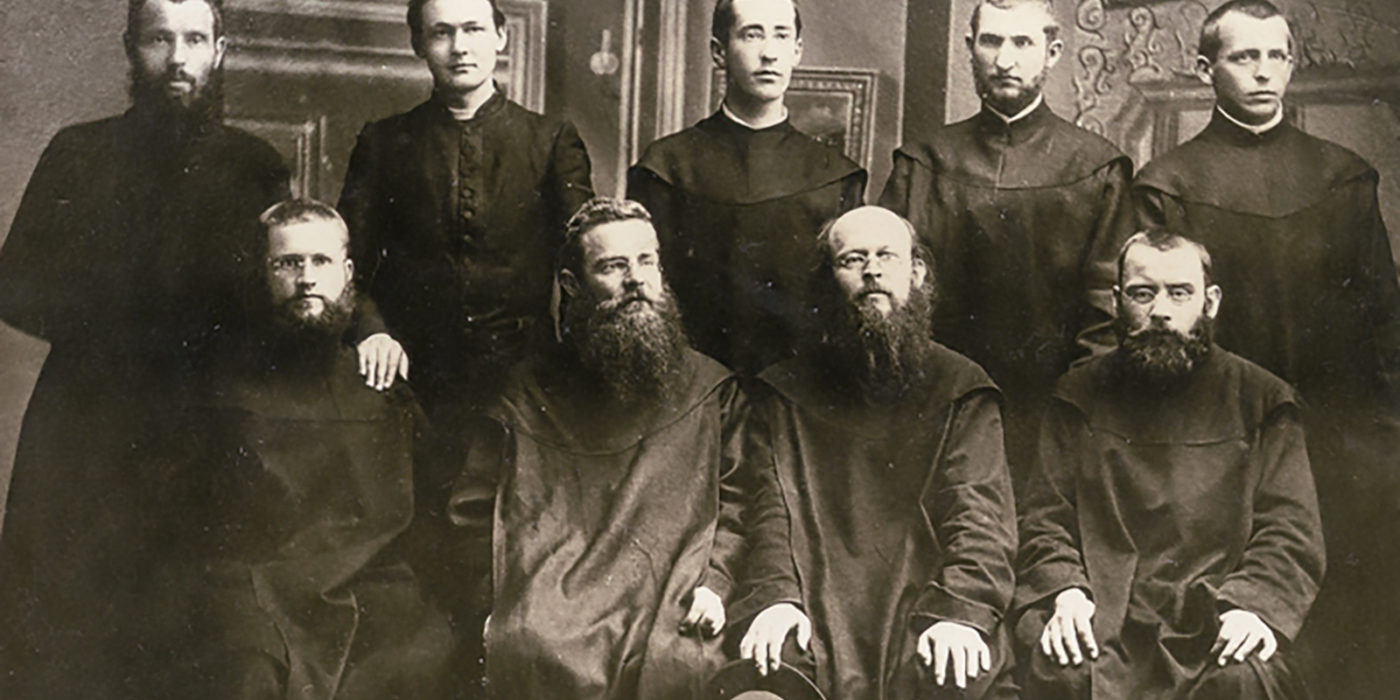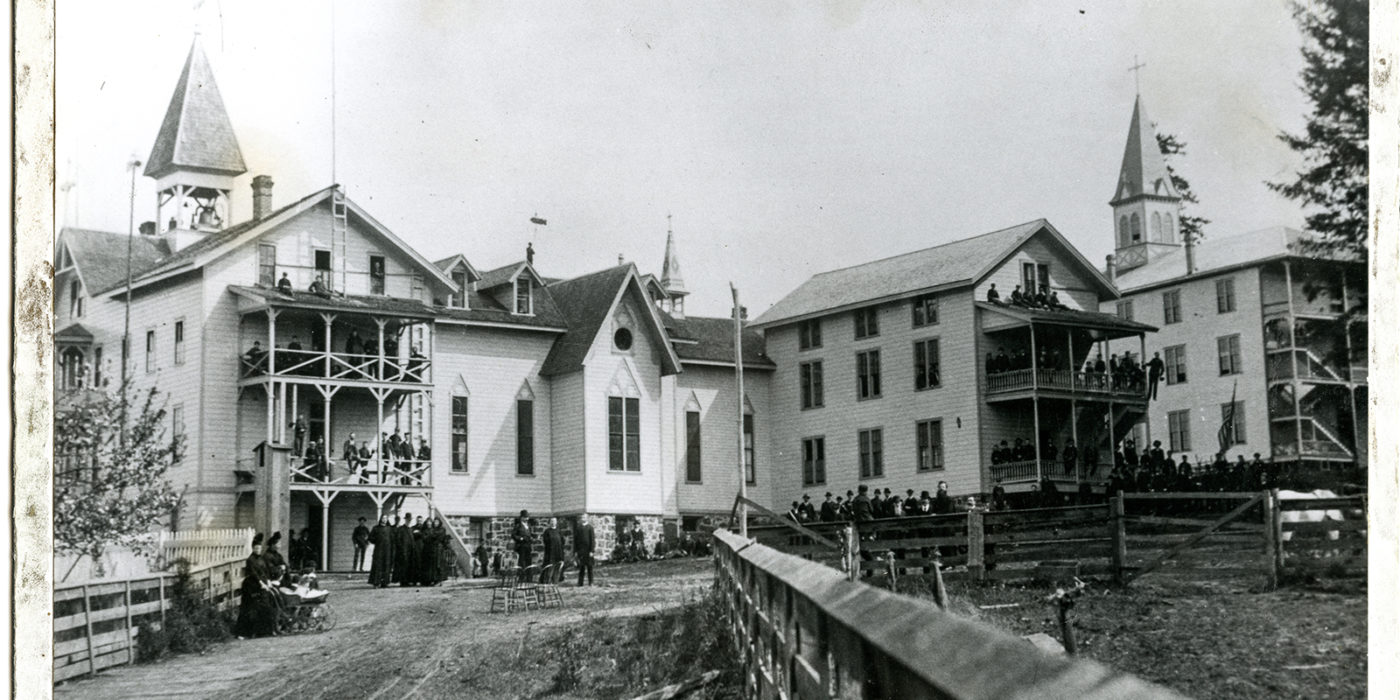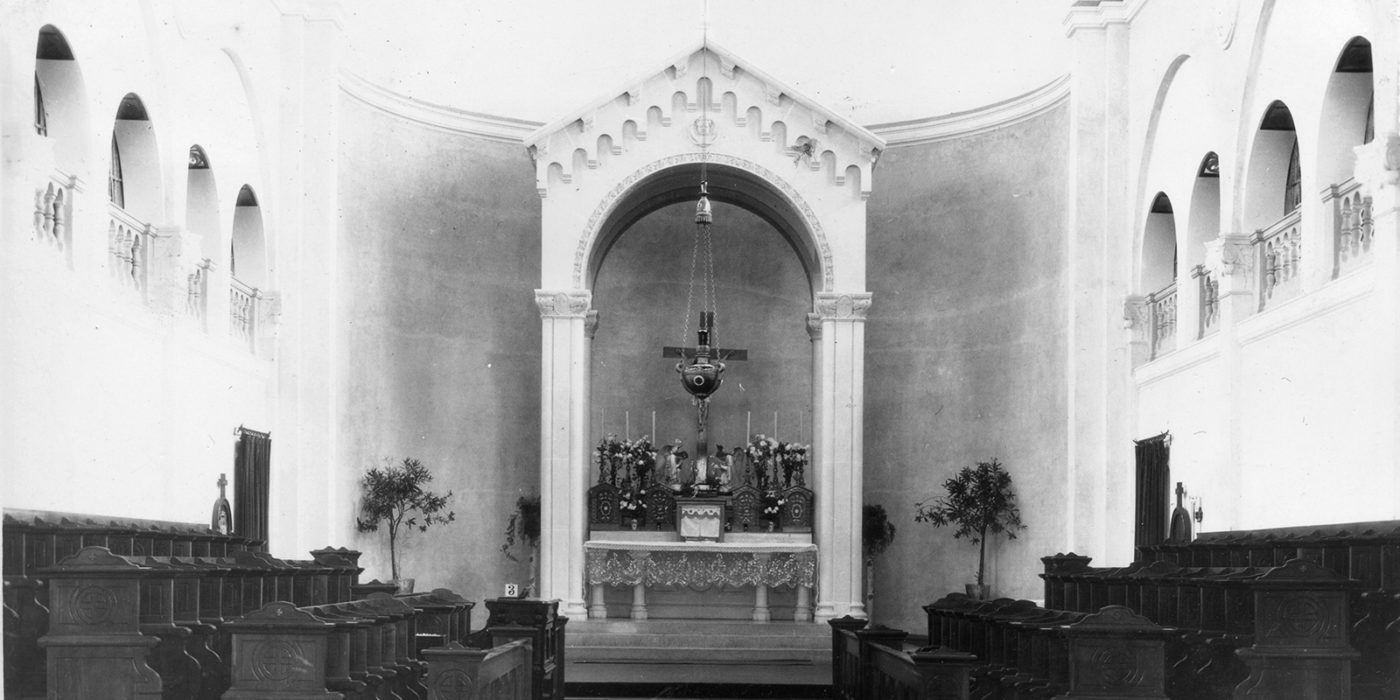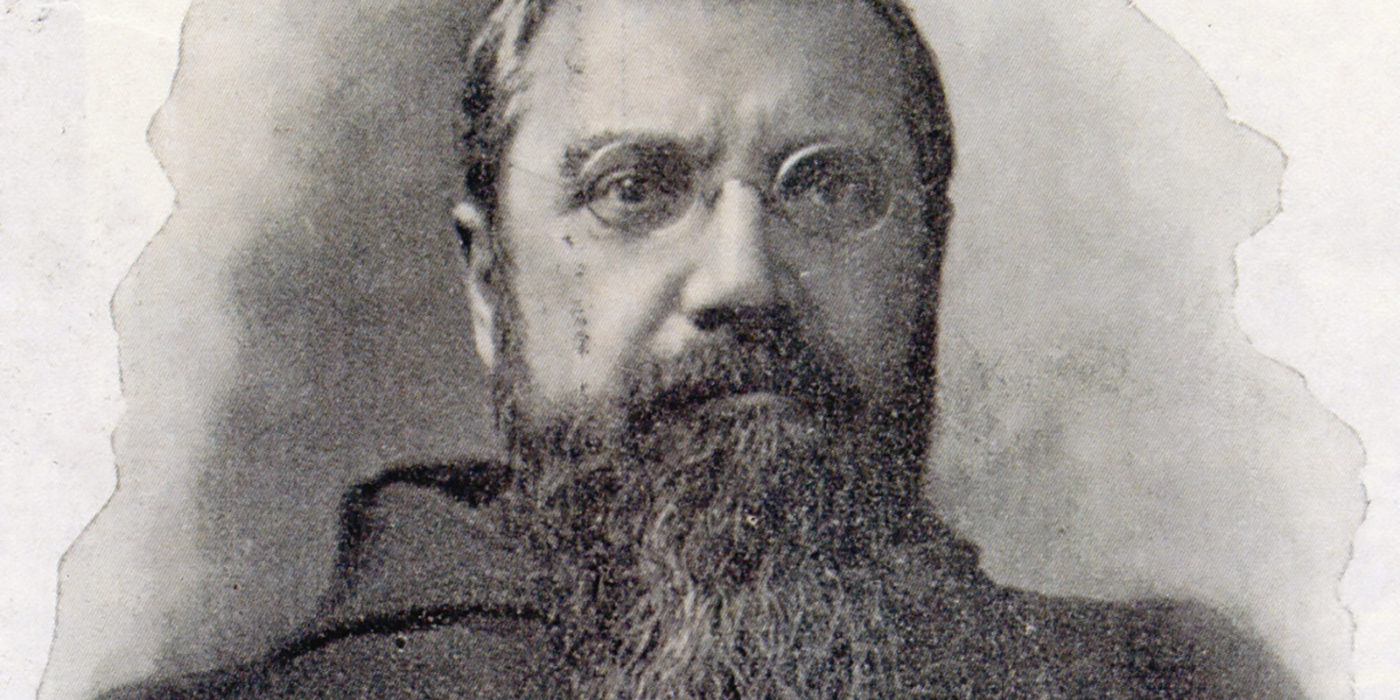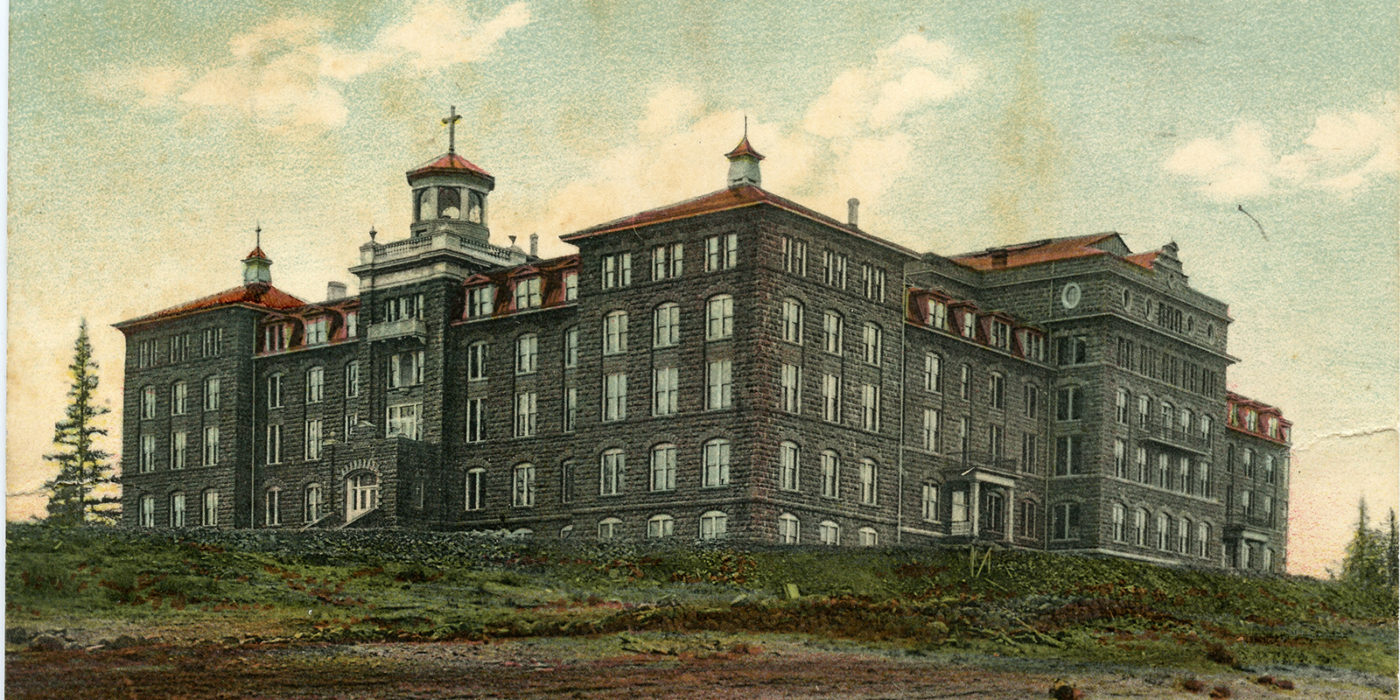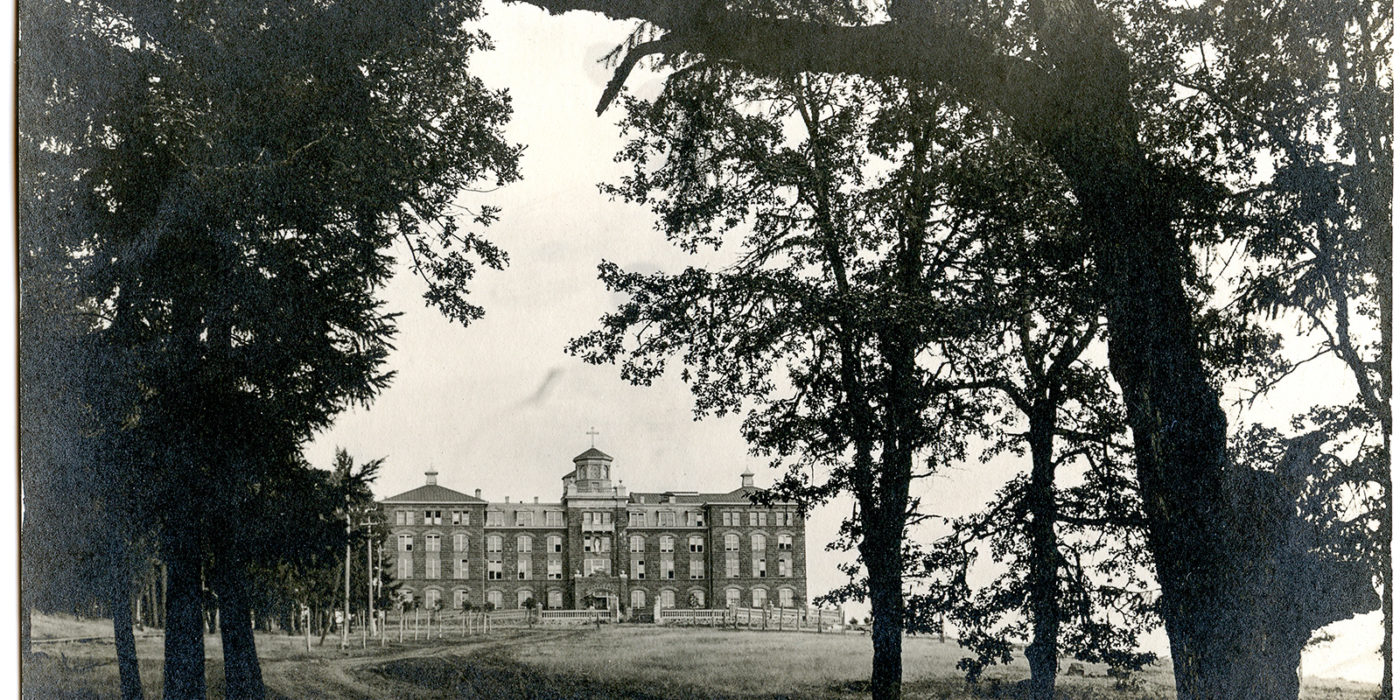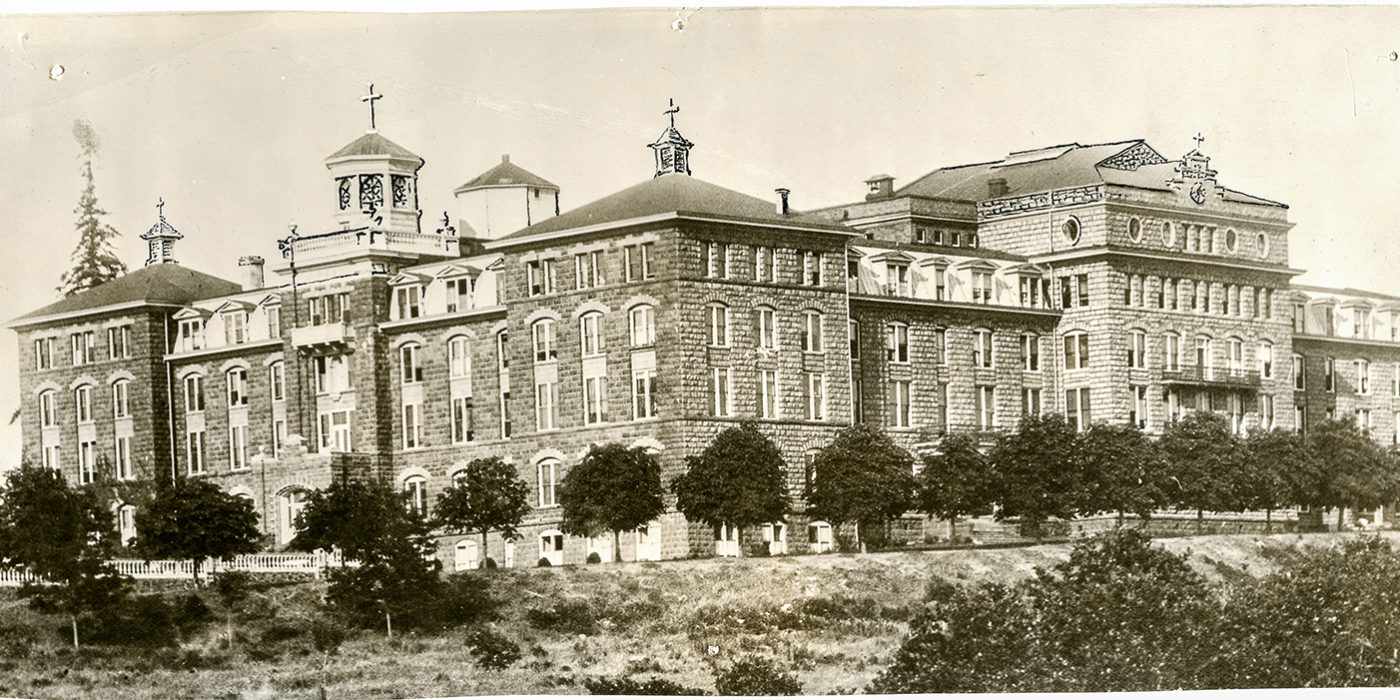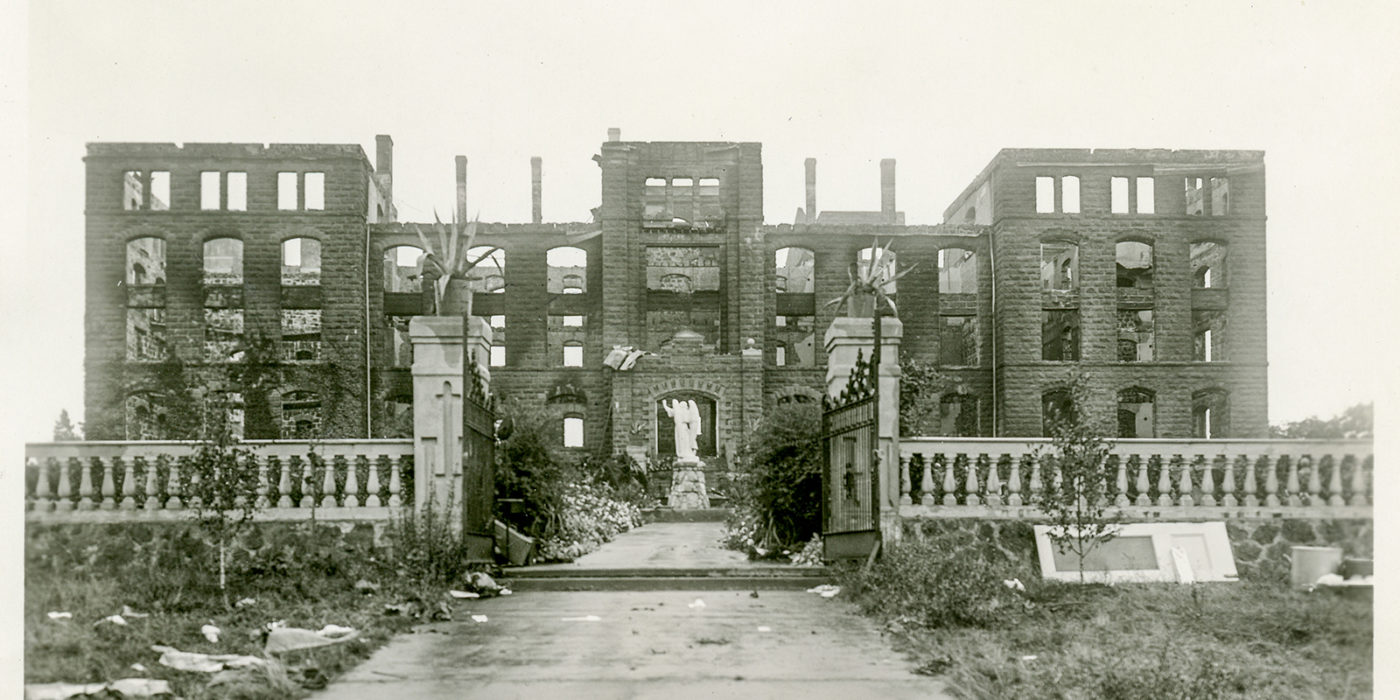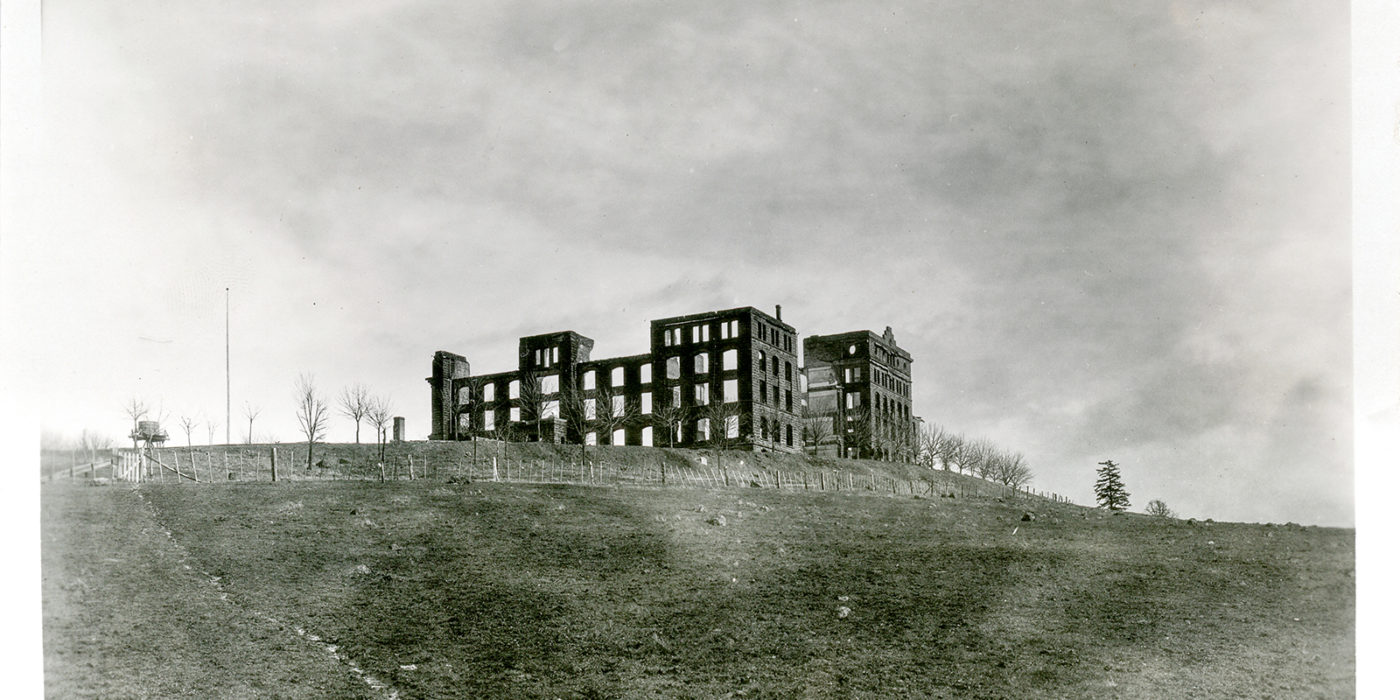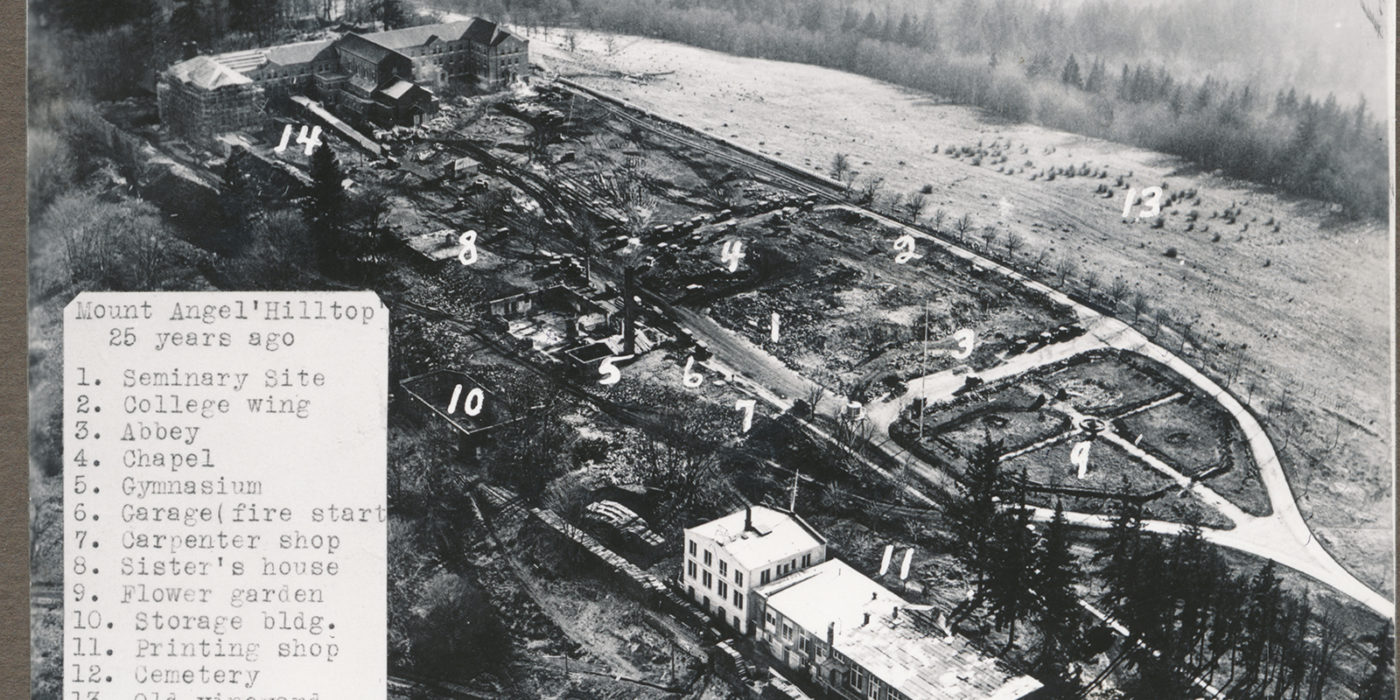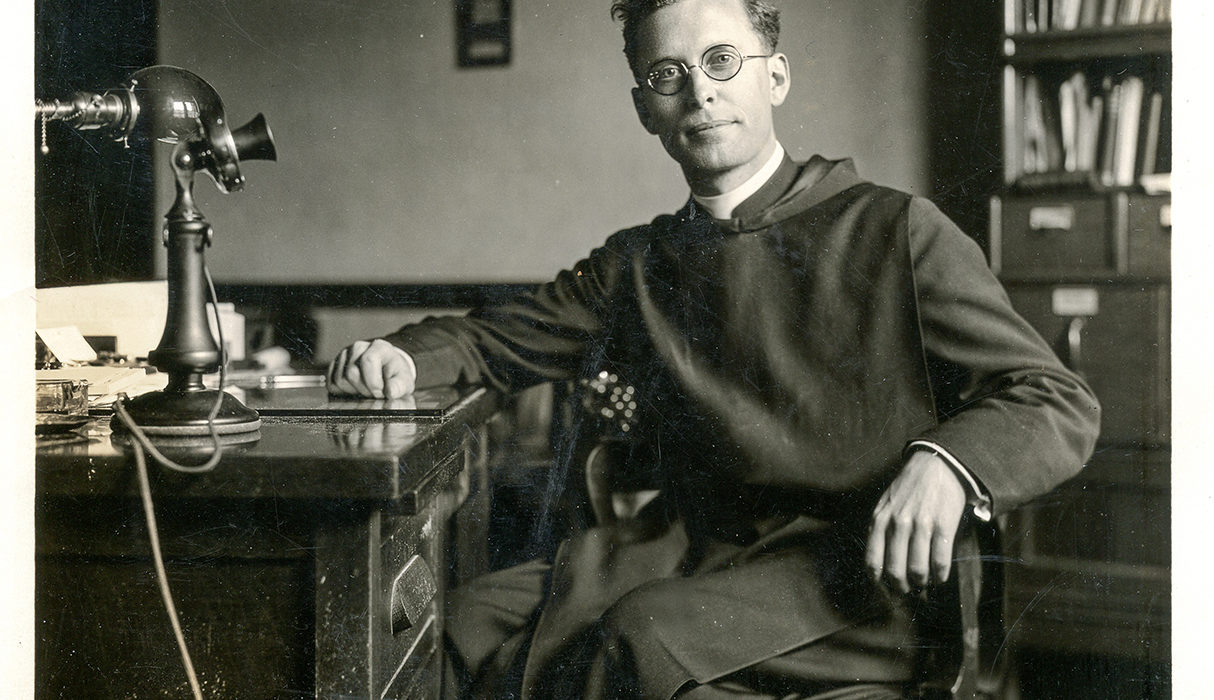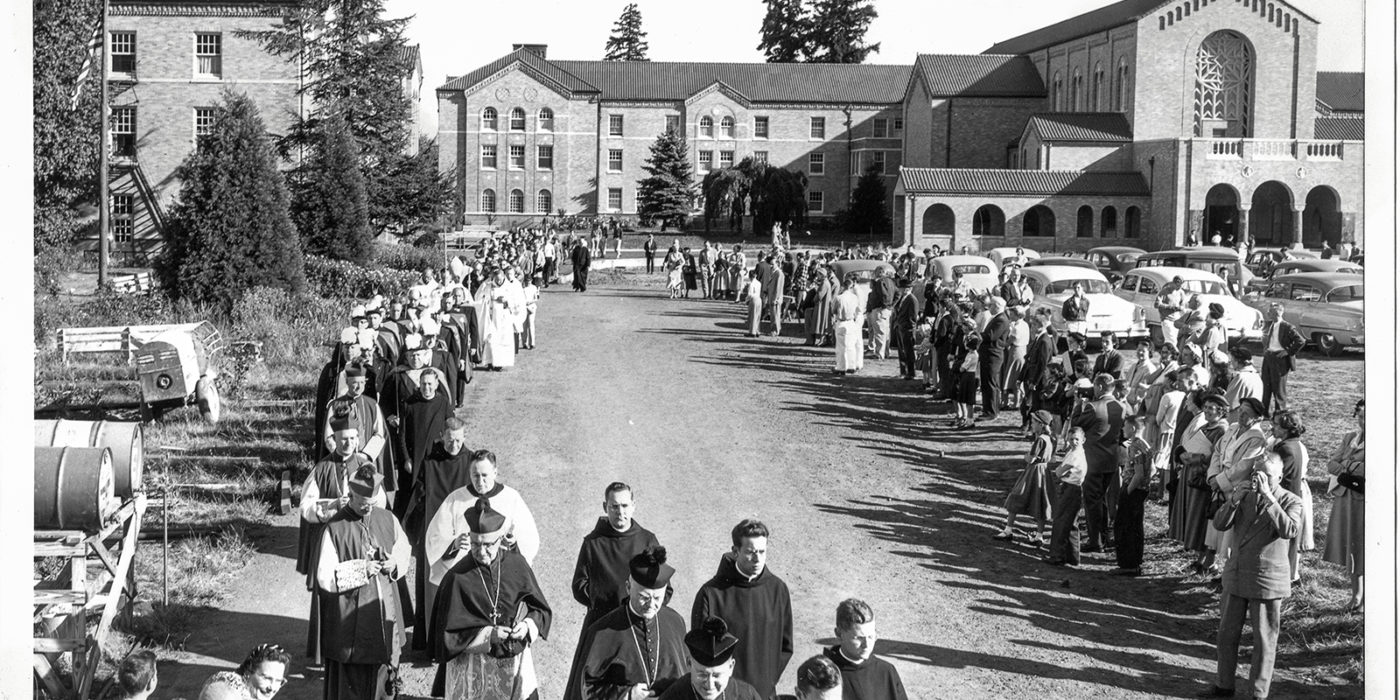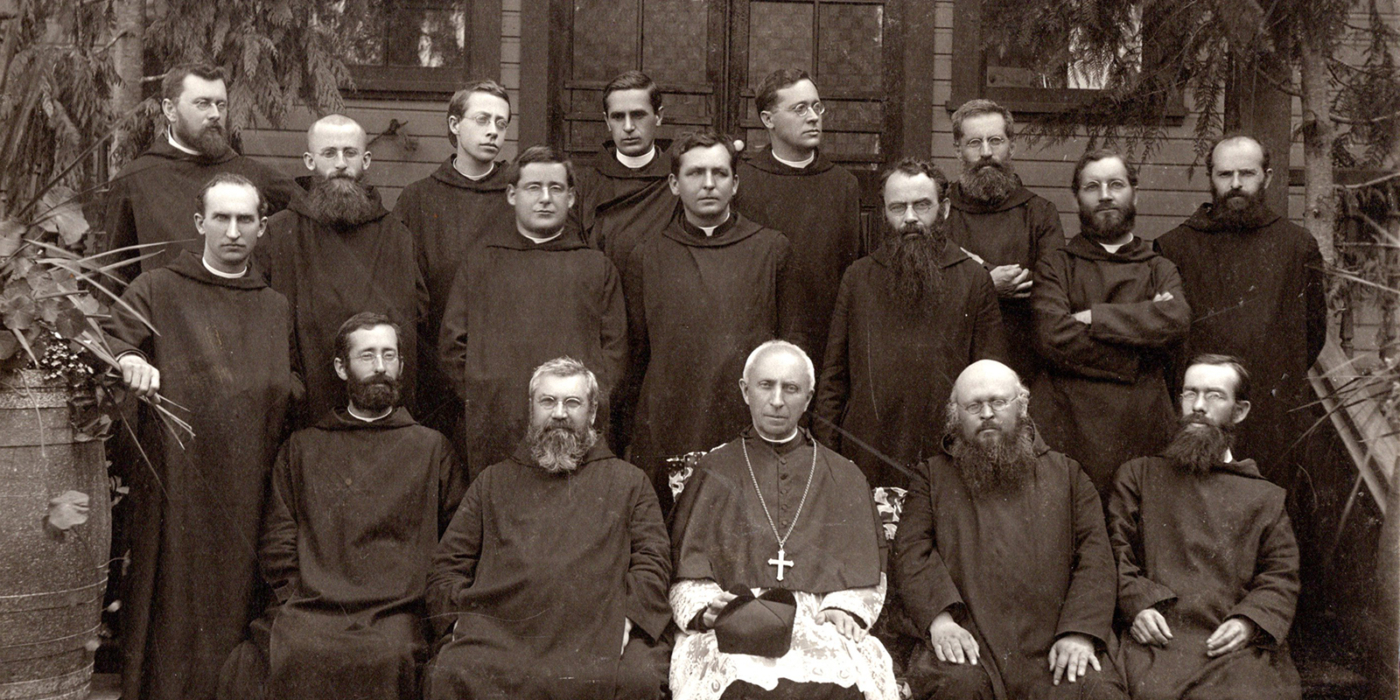Would you like to help support the growth of Mount Angel Abbey? There are currently about 54 monks in the community and almost half are in religious life for less than 10 years. In other words, a good portion of their days are spent studying the Benedictine Rule of Life, learning the works of the Abbey, or in seminary preparing for ordination. We appreciate the support of your prayers and any size gift you feel inspired to contribute.
Mount Angel Abbey
A Life Built Upon Centuries of Tradition
It began with Benedict of Nursia (Norcia) …
Saint Benedict was born of a Roman noble family around 480 A.D. He was schooled at Rome, but eventually turned away from the declining culture and worldly life of the Roman schools and took spiritual refuge in a cave at Subiaco. There he lived an ascetical life of prayerful solitude. Saint Gregory the Great tells us in Book II of his Dialogues that a group of monks convinced him, with much reluctance, to be their abbot. Soon they tired of Benedict’s discipline and wanted him to leave. He wouldn’t go, so they attempted to poison him. After this unfortunate affair, the holy man founded a monastery at Monte Casino, which would become the “mother” of the entire Benedictine confederation of monks. Saint Benedict died around 547 A.D.
Mount Angel Abbey inherited Saint Benedict’s Rule of life with its 1,500-year-old tradition of prayer and work. Founded from the Swiss Abbey of Engelberg in 1882, Mount Angel Abbey strives to be a place where all can “seek things above” in peace and solitude. The Abbey keeps vital the ancient traditions of Divine Office, love of learning, and hospitality.
-
Monks Arrive in Oregon
An hour before midnight on a rainy October night, four Portland priests stood on a wharf peering out into the dark, waiting to welcome the first Benedictines to the West Coast.
The SS Columbia was headed north from San Francisco, carrying a small band of monks and nuns in search of a new home. One of its passengers, Fr. Adelhelm Odermatt, O.S.B., had recently written a nostalgic letter to his abbot at Engelberg Abbey in the mountains of Switzerland, saying, “I hunger and thirst for mountains, for during seven years in America I have not yet seen a decent hill.” But Oregon, he wrote, “is said to be a kind of Paradise, if one can speak of such a thing on this earth.”
The morning after their arrival, Fr. Adelhelm’s sermon created almost as much of a sensation as his black beard. The long-bearded monks were given a blessing by Archbishop Charles John Seghers (1880-1884), second archbishop of the Church in Oregon, and they soon found their new home – at the foot of a fir-clad mountain – a place Native Americans had worshipped and called “Mount of Communion.”
In 1882, Mount Angel Priory was founded, and a mere five years later, the pioneer monks opened Mount Angel College. In 1889, Archbishop William Gross, C.Ss.R. (1885-1898), of the Archdiocese of Oregon City, asked the monks to establish a seminary. The Abbey and school would go through many changes, people and buildings would come and go, and the monks would face hardship and setbacks; yet they would show remarkable resilience.
Through two devastating fires, two world wars, depressions and recessions, the gradual secularization of society, turbulence in the Church, and the challenges and blessings of a 21st-century, globally connected, highly diverse Church, the Benedictine monks at Mount Angel Abbey have kept to their vision. Over the years, much has changed, but much has endured. We invite you to this holy Hilltop, and hope you will share in our rich tradition and find peace and blessings.
The Early Years
Before Mount Angel Abbey officially began in 1882, it existed in the mind of Father Adelhelm Odermatt, a monk of Engelberg Abbey working in Missouri with the new foundation at Conception Junction. He lived there for several years in close contact with Father (soon to be Abbot) Frowin Conrad, a fellow monk, who was the founding superior of the new Swiss foundation, Conception Priory. But Father Adelhelm did not like some of the changes that Father Frowin made to the monastic practice; they were, after all, supposed to found a monastery that would serve as a place of refuge, should their own abbey in Switzerland be suppressed. So, with a companion, Father Nicholas Frei, he began searching for a site to make yet another foundation. He traveled and explored Omaha, Denver, San Francisco and the valleys around Santa Barbara, as well as the shores of Puget Sound in Washington. He settled on the Butte near the town of Fillmore in western Oregon and renamed the site Mount Angel, which is a translation of the Swiss “Engelberg.”
The Hilltop
In 1883 the work of buying the various parcels that transected the Hilltop began. The young community lived in nearby Gervais until 1884 when the present buttes were purchased. The following year saw the arrival of the newly appointed third archbishop of Oregon City, Archbishop William Gross, CSsR, who was an educator. At his insistence the community opened a college in 1887 and the Benedictine Press in the following year. Then in 1889, again at the urging of Archbishop Gross, Mount Angel Priory opened a seminary, the second on the west coast, and now the oldest in existence west of the Rockies. Then in 1892 a disastrous fire destroyed the monastery, church and seminary buildings and brought the first great setback to the young community.
Father Adelhelm, the first prior of the community, was now replaced in that office and he began to expend himself raising funds, both to pay off the debts incurred for the land and for the cost of buildings. And now, it was urgent to rebuild. He was successful, and the cornerstone of the new monastery was laid in 1899, this time on top of the hill, by a new archbishop of Oregon City, Alexander Christie. In 1903 the community was able to move into the first part of the building complex on Christmas Eve and quickly resume a unified monastic and educational apostolate.
Becoming an Abbey
One year later the Priory came of age and was elevated to an Abbey (March 24, 1904) by Pope Pius X. The first abbot, Father Thomas Meienhofer, O.S.B. (1904-1910), a native of Switzerland had entered the struggling American foundation as a result of vocation work done by the founder, Father Adelhelm. The first monks were sent from Engelberg Abbey; the first student monks were members of the College at Engelberg who were filled with missionary zeal after hearing Father Adelhelm. But with the establishment of Mount Angel College, young students from the locale began to enter the community; thus, the once completely Swiss-German monastery slowly began to receive Americans. Through the Abbey’s German publications, contacts were established with many German communities who began to send their sons to Mount Angel College, some of whom became monks of the Abbey.
In 1910, with the resignation of Abbot Thomas, the community elected Father Placidus Fuerst, O.S.B. (1910 – 1921), as its second abbot. He presided over a decade of growth in monastic personnel and the consolidation of the various apostolates. He also reigned during the time of the great influenza epidemic which took lives of both monks and students. Abbot Placidus resigned in 1921, after which the community elected an Irishman as third abbot, Father Bernard Murphy, O.S.B., a native of nearby Portland.
The Great Fire
In 1934 Abbot Bernard, now blind, retired as abbot and the community elected as its fourth abbot, Father Thomas Meier, O.S.B. (1934-1950). In 1936 the gymnasium was completed. The age of specialization had also arrived. The community was now blessed with sufficient men to send some away to Europe American Universities for higher education and advanced degrees. At home, greater emphasis was placed on the monastic life, the community High Mass and private prayer than had been possible in the early days of great activity in the face of great need.
In 1939 the community celebrated the centennial of the coming of the first Catholic missionaries to the Oregon Territory and, on its own part, sent off its first group of monks to found a new monastery in British Columbia, New Westminster. There they staffed a seminary and brought monastic witness to another church just emerging from its missionary period.
In 1946 the community closed Mount Angel College and devoted itself full-time to the seminary – theology, college and high school – and to the local Prep school for boys.
In 1950 Abbot Thomas, partially blind and in poor health, resigned. In turn, the community chose as its fifth abbot Father Damian Jentges, O.S.B., (1950-1974). The completion of the Abbey church was underway, and the explosion of priestly vocations, common after the Second World War, had so crowded the seminary as to make a new residence hall mandatory. The Abbey church was completed and dedicated in 1952; Anselm Hall was dedicated in 1954. The temporary buildings on the South side of the hill were used to house Mount Angel Preparatory School until this was transferred to the Portland Archdiocese and finally to the public school system.
-
Mount Angel Abbey - Growth and Expansion
With the completed construction of Benet Hall (1959), the abbey guest and retreat house, made it possible for the community of Mount Angel Abbey to expand its work of traditional Benedictine hospitality and retreats.
In 1965 two new monasteries were started from Mount Angel Abbey: Ascension Priory in Idaho, and Our Lady of the Angels Priory in Cuernavaca, Mexico. The next few years also saw the full impact of the Second Vatican Council, and the renewal efforts within the Church were epitomized in the renewal of monastic life, seminary life and the priestly apostolates.
A new library for the Abbey and seminary, the pride of Abbot Damian and treasure of the Hilltop, was designed by the renowned Finnish architect, Alvar Aalto, and constructed between 1968 – 1970, the year it was dedicated.
Abbot Damian’s long reign ended with his death in 1974, and the monastic community chose Father Anselm Galvin, O.S.B., as its sixth abbot. Because of the insufficient number of students, in 1978 the seminary high school, beloved to Abbot Anselm, was closed. Abbot Anselm guided the monastic Chapter in moving Ascension Priory from Twin Falls, Idaho, to a new site near Jerome, Idaho, and to constructing a new monastery there.
In 1980 Abbot Anselm resigned, and as its seventh abbot the community elected Father Bonaventure Zerr, O.S.B. He was dedicated to developing outstanding collections in the new library, not only for the monks and the seminarians, but also for those pursuing scholarly research. Abbot Bonaventure was known far and wide as an outstanding teacher, homilist, and retreat master.
When Abbot Bonaventure died in 1988, the community elected Father Peter Eberle, O.S.B., as its eighth abbot (1988-1997). As a theology professor in the seminary, he encouraged the growth of the seminary, the establishment of Pre-theology for late vocations, and the enhancement of the formation program. During his time the Ott tracker organs were also commissioned and installed in the Abbey church. After his resignation, he was elected Abbot President by the abbots of the Swiss-American Congregation (1999 – 2011).
With the resignation of Abbot Peter in 1997, the community chose Father Joseph Wood, O.S.B, a member of Ascension Priory in Idaho, as its ninth abbot (1997-2001). Abbot Joseph and the monastic Chapter approved Ascension Priory – now called Monastery of the Ascension – to become independent of Mount Angel Abbey (1998). Abbot Joseph retired in 2001 for reasons of age and delicate health.
Abbot Nathan Zodrow, O.S.B., was elected the tenth abbot of Mount Angel Abbey (2001-2009). During this time, Abbot Nathan guided the monastic chapter in establishing the Abbey Foundation of Oregon and the Abbey’s Child Protection Program (2002). In addition, the community built a new seminary graduate school, Annunciation (2006), and the Bell Tower of the Visitation (2007).
Following Abbot Nathan’s resignation, the community elected as eleventh abbot, Father Gregory Duerr, O.S.B. (2009-2016), who received his Abbatial blessing on February 26, 2010, from Portland’s Archbishop Emeritus John Vlazny. As part of his vision for hospitality, Abbot Gregory began planning for the eventual renovation and expansion of the Benet Hall Guest and Retreat House (now called Saint Benedict Guesthouse and Retreat Center).
Following the resignation of Abbot Gregory on February 10, 2016, Father Jeremy Driscoll, O.S.B. (2016 – ), was elected the twelfth Abbot of Mount Angel Abbey. He received the Abbatial blessing on April 28, 2016 from Archbishop Alexander King Sample. Abbot Jeremy has most recently taught theology at Mount Angel Seminary and at Sant’ Anselmo in Rome. He serves on various Vatican commissions, has published broadly, and often conducts conferences and retreats throughout the United States and beyond. During his time, Saint Benedict Guest House and Retreat Center was completed and rededicated (2019).

